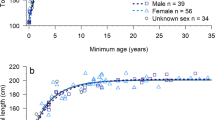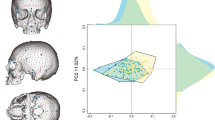Abstract
Reliable sex identification in Varanus salvator traditionally relied on invasive methods like genetic analysis or dissection, as less invasive techniques such as hemipenes inversion are unreliable. Given the ecological importance of this species and skewed sex ratios in disturbed habitats, a dataset that allows ecologists or zoologists to study the sex determination of the lizard is crucial. We present a new dataset containing morphometric measurements of V. salvator individuals from the skin trade, with sex confirmed by dissection post- measurement. The dataset consists of a mixture of primary and secondary data such as weight, skull size, tail length, condition etc. and can be used in modelling studies for ecological and conservation research to monitor the sex ratio of this species. Validity was demonstrated by training and testing six machine learning models. This dataset has the potential to streamline sex determination, offering a non-invasive alternative to complement existing methods in V. salvator research, mitigating the need for invasive procedures.
Similar content being viewed by others
Background & Summary
The study of morphological differences between the sexes in Varanus salvator is ecologically important, especially considering that the species is extensively used for the skin trade and that anthropogenic habitat disturbance is thought to influence the sex ratio1,2. Surprisingly, little attention has been paid to sex determination in V. salvator based on morphometric proportions of the body, although the general body morphology of the species has been extensively studied3,4,5. Within varanids, species show considerable variation in body size, with larger species often exhibiting more pronounced sexual dimorphism6, which is consistent with Rensch’s rule7. Specific features such as variations at the base of the tail (where the male hemipenes are located) and the proportions of the head shape have also been reported8,9.
Reliable sex determination of V. salvator in the field would facilitate the measurement of sex ratios, which is crucial for drawing conclusions about population dynamics in disturbed habitats. Currently, unambiguous sexing requires invasive methods in which the reproductive organs are measured during dissection or genetic analysis9,10. Less invasive methods, such as hemipenis inversion, are unreliable due to the possible for confusion between partially elongated male hemipenis and female hemiclitori but are still used in ecological studies1. Previous studies suggest that tail-to-body ratio, eye-to-ear length, and the extent of the tail base are potential features for sex determination in this species4,9,11. Therefore, there are many research questions that need to be answered by investigating the relationship between the sex of V. salvator and its morphology, and a dataset that allows statistical or machine learning modelling is crucial.
We present a morphometric dataset that provides a non-invasive method for sex prediction and can potentially improve the accuracy of sex determination in the field alongside the commonly practised hemipenes inversion. This dataset is useful for various fields, including machine learning engineers, app developers, data scientists, ecologists, herpetologists, conservationists, and others.
Methods
Sampling
This study sampled a total of 146 individual V. salvator; 83 females, 63 males. Lizards were sampled in a skin factory in Johor (location provided by Department of Wildlife and National Parks Peninsular Malaysia (PERHILITAN)). All lizards were sourced from oil palm plantations in Perak. The sample size was determined by the allocation provided to the researchers by the skin factory.
Dataset formation
Lizard morphological features measured included the following: thigh width (TW), base tail circumference (BTC), skull length (SL), skull width (SW), eye to ear length (EEL), snout-vent length (SVL), snout-tail length (STL), tail length (TL), and weight1,3,5,9,11,12. Length measurements were made using a flexible measuring tape whereas weight measurements were made using a handheld weighing scale. From the measurements made above, TW, BTC, SL, SW, EEL, and TL were divided by STL to derive relative proportions. Similarly, SW and EEL were divided by SL to derive relative head proportions. These variables were used for analysis, as some of the literature suggests relative proportions in body morphology and head dimension could be different between sexes3,4,8. Body condition was made by dividing weight by STL, similar to a body mass index1. Body size assessment involved a principal components analysis (PCA) performed on eight morphometric variables, namely TW, BTC, SL, SW, EEL, SVL, STL, and weight (similar to13). Component number 1 from the resulting PCA output was subsequently utilized as body size (Tables 1 and 2). Definitions of morphometric variables used for sex prediction are provided in Table 3.
Ethics statements
All authors confirm that we have complied with all relevant ethical regulations. A permit to conduct research on this species has been secured from PERHILITAN, license number P-00003-15-19; as well as animal ethics approval from Universiti Sains Malaysia, Animal ethics approval number USM/IACUC/2020/(123)(1064).
Data Records
The dataset is publicly available on Figshare at the link: https://doi.org/10.6084/m9.figshare.2455859514. Morphometric measurements were categorised according to sex (83 females, 63 males). The raw data were recorded in a physical data sheet predefined with the attributes and digitised into an Excel file and saved in CSV format. The data were checked, cleaned, and processed into independent variables that can serve as predictors and dependent variables according to the lizards’ sex.
Technical Validation
Pilot testing with basic model construction
A pilot study was conducted to validate the suitability of the dataset in predicting the sex of V. salvator. Six machine learning models were used: logistic regression, random forest, support vector machine, extreme gradient boosting, adaptive boosting, and gaussian naïve bayes. For training and validation, data were split 70% for training, and 30% for validation. Model construction, training and validation was conducted using Python programming in Google Colab workbook. The resulting confusion matrixes and model performances are summarized in Supplementary Table 1.
Usage Notes
This dataset contains morphological measurements form 83 females, 63 male V. salvator. However, it is important to acknowledge several limitations inherent to the dataset. Firstly, the data predominantly represents smaller individuals, as it was collected from individuals captured for the skin trade. Skin factories typically accept individuals weighing ≤5 kg, contributing to this size bias. Additionally, individuals from other habitats like forests and urban areas are notably absent from this dataset, given that the data collection exclusively pertained to animals sourced from oil palm plantations. Moving forward, to enhance the applicability of morphological data analysis, it is recommended to include individuals from wild populations in model training and validation. This inclusion could lead to the development of an app where inputting relevant morphological variables can determine the sex of wild individuals, allowing for easy sex identification in the field. Furthermore, future work could explore image-based means of sex identification, which could prove more time and cost efficient to conduct.
Code availability
The Python code utilised in this study is available on Kaggle, via the link: https://www.kaggle.com/code/ariffazlanalymann/ml-varanus-morphology-sex-prediction.
References
Twining, J. P., Bernard, H. & Ewers, R. M. Increasing land-use intensity reverses the relative occupancy of two quadrupedal scavengers. PloS One 12, 1–13 (2017).
Khadiejah, S., Razak, N., Ward-Fear, G., Shine, R. & Natusch, D. J. D. Asian Water Monitors (Varanus salvator) remain common in Peninsular Malaysia, despite intense harvesting. Wildl. Res. 46, 265–275 (2019).
Shine, R., Harlow, P. S. & Keogh, J. S. Commercial harvesting of giant lizards: the biology of water monitors Varanus salvator in southern Sumatra. Biol. Conserv. 77, 125–134 (1996).
Shine, R., Ambariyanto, Harlow, P. S. & Mumpuni Ecological traits of commercially harvested water monitors, Varanus salvator, in northern Sumatra. Wildl. Res. 25, 437–447 (1998).
Koch, A., Auliya, M., Schmitz, A., Kuch, U. & Böhme, W. Morphological studies on the systematics of South East Asian water monitors (Varanus salvator complex): nominotypic populations and taxonomic overview. Mertensiella 16, 109–180 (2007).
Frýdlová, P. & Frynta, D. A test of Rensch’s rule in varanid lizards. Biol. J. Linn. Soc. 100, 293–306 (2010).
Abouheif, E. & Fairbairn, D. J. A comparative analysis of allometry for sexual size dimorphism: assessing Rensch’s rule. Am. Nat. 149, 540–562 (1997).
Smith, J. G., Brook, B. W., Griffiths, A. D. & Thompson, G. G. Can morphometrics predict sex in varanids? J. Herpetology 41, 133–140 (2007).
Yahya Al-ma’ruf, A. et al. Morphology and histology of paryphasmata and hemibaculum of Varanus salvator based on sexual maturity. Open Vet. J. 11, 330–336 (2021).
Srikulnath, K. et al. Identification of the linkage group of the Z sex chromosomes of the sand lizard (Lacerta agilis, Lacertidae) and elucidation of karyotype evolution in lacertid lizards. Chromosoma 123, 563–575 (2014).
Mahaprom, R., Duengkae, P. & Chaynkern, Y. Population density and morphometry analysis for sex determination in Varanus salvator from Bangkachao, Samutprakran Province. Thai For. J. 34, 109–123 (2015).
Guerrero-Sanchez, S., Goossens, B., Saimin, S. & Orozco-terWengel, P. The critical role of natural forest as refugium for generalist species in oil palm-dominated landscapes. Plos One 16, e0257814 (2021).
Brooks, S. A. et al. Morphological variation in the horse: defining complex traits of body size and shape. Anim. Genet. 41, 159–165 (2010).
Alymann, A. A. Varanus salvator morphology sex prediction (19 Features). Figshare https://doi.org/10.6084/m9.figshare.24558595 (2023).
Author information
Authors and Affiliations
Contributions
A.A.A. and I.A.A. complied the data, A.A.A. and S.Q.O. created the first dataset version, and wrote the first version of the manuscript with inputs from A.H.A., M.U.R., and H.S. All authors contributed substantially to the formation of this manuscript.
Corresponding author
Ethics declarations
Competing interests
The authors declare no competing interests.
Additional information
Publisher’s note Springer Nature remains neutral with regard to jurisdictional claims in published maps and institutional affiliations.
Supplementary information
Rights and permissions
Open Access This article is licensed under a Creative Commons Attribution 4.0 International License, which permits use, sharing, adaptation, distribution and reproduction in any medium or format, as long as you give appropriate credit to the original author(s) and the source, provide a link to the Creative Commons licence, and indicate if changes were made. The images or other third party material in this article are included in the article’s Creative Commons licence, unless indicated otherwise in a credit line to the material. If material is not included in the article’s Creative Commons licence and your intended use is not permitted by statutory regulation or exceeds the permitted use, you will need to obtain permission directly from the copyright holder. To view a copy of this licence, visit http://creativecommons.org/licenses/by/4.0/.
About this article
Cite this article
Alymann, A.A., Alymann, I.A., Ong, SQ. et al. Morphometric dataset of Varanus salvator for non-invasive sex identification using machine learning. Sci Data 11, 337 (2024). https://doi.org/10.1038/s41597-024-03172-9
Received:
Accepted:
Published:
DOI: https://doi.org/10.1038/s41597-024-03172-9



